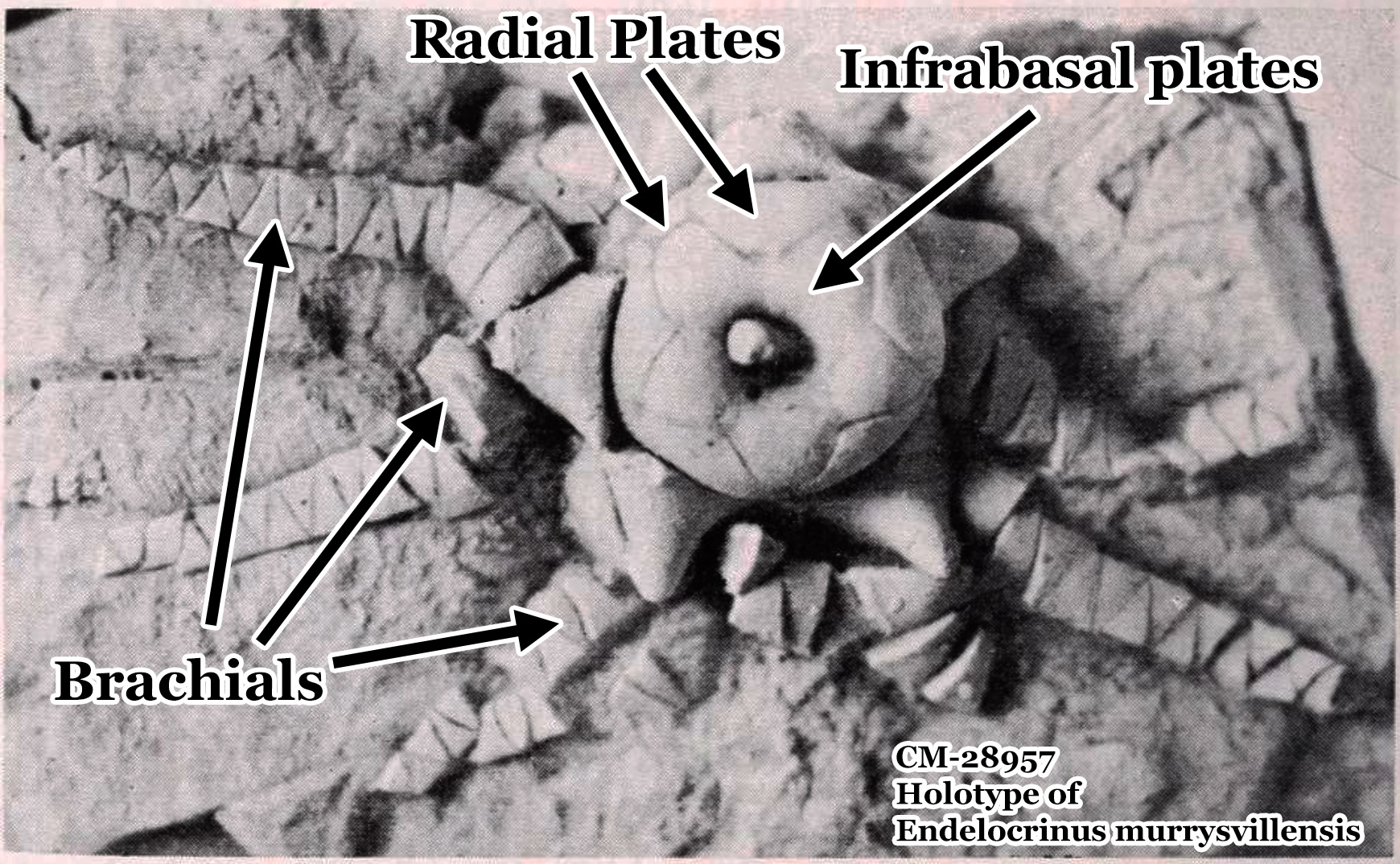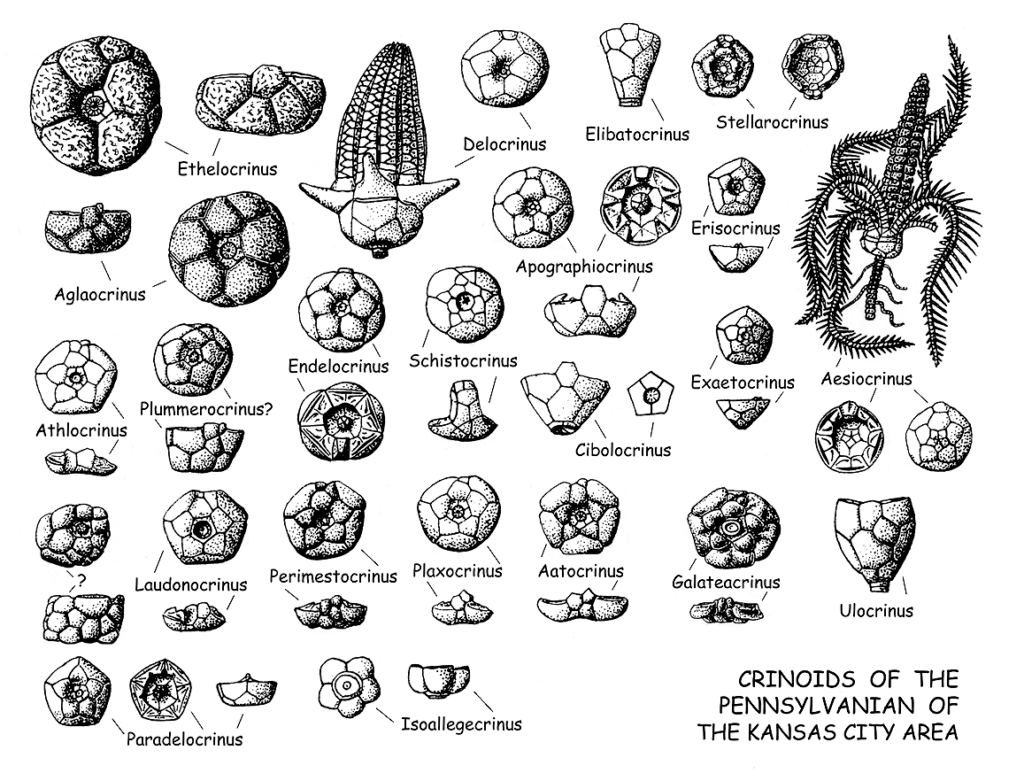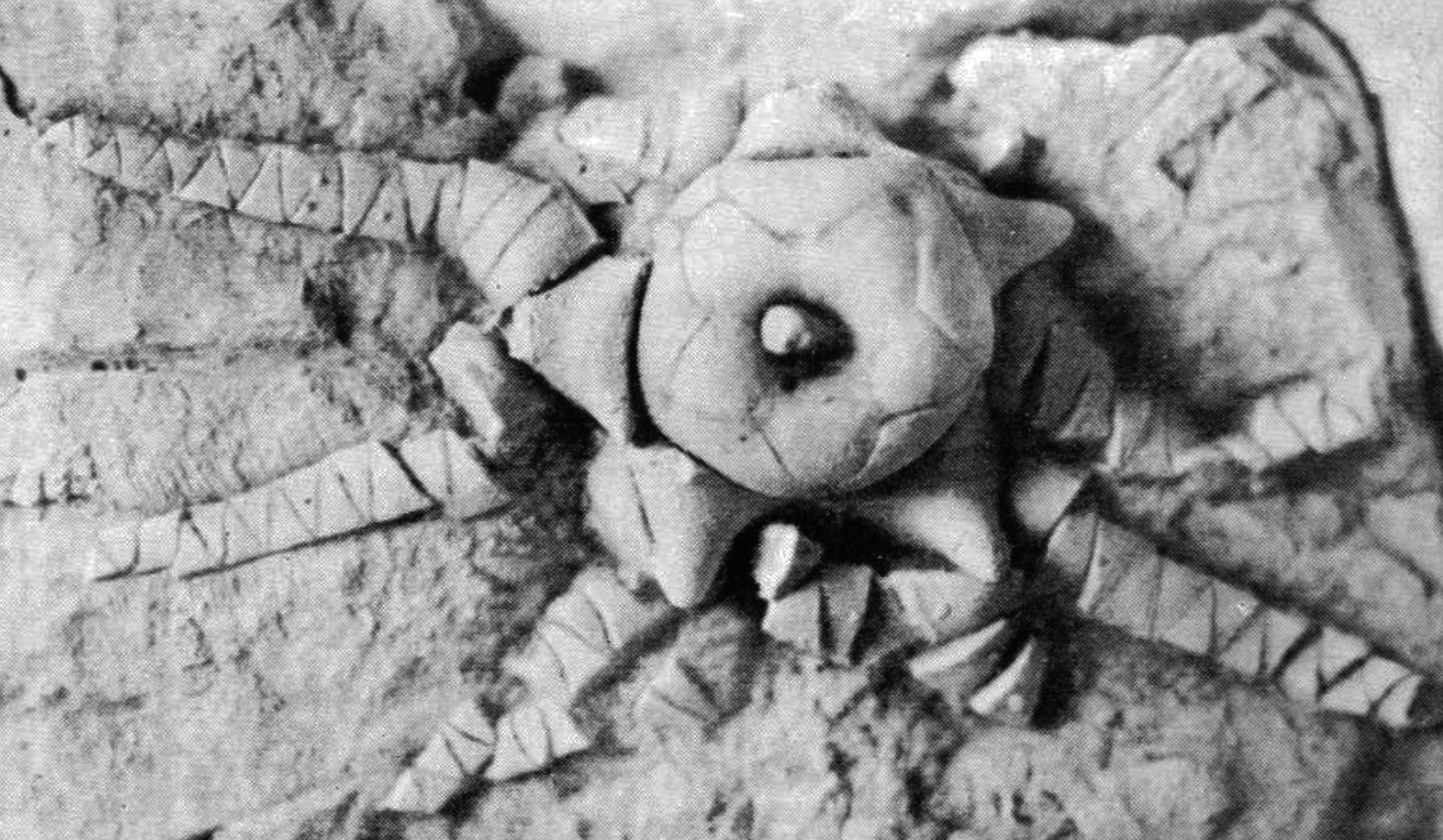Endelocrinus murrysvillensis is a species of crinoid that was first described in 1967 by John James Burke. Crinoids are a long-lived class of invertebrates that have existed from Ordovician times to the current day. Nicknamed sea lilies, these beautiful sea creatures are often found as small disc-shaped fossils with a central hole. This hole is known as a lumen and can vary in shape. All recovered columns from the Brush Creek limestone have circular lumens. By way of contrast, I have recovered pieces from commercial limestone gravel coverings that have star-shaped lumens.

Examples of crinoid specimens are near impossible to identify from local finds in the Brush Creek limestone. Crinoid columnals are the most common morphology type recovered. These are fossilized discs that make up the stems of these curious creatures. These pieces are only a part of the complete creature and are not enough to identify a genus, let alone a distinct species. To ensure better identification, the theca (body) should be recovered, which is preserved in a calyx. A calyx is a name for a cup-like structure in lifeforms. In flowers, for example, the outermost leafy layer is the calyx.
J.J. Burke’s Manuscript Finally Shines a Light
In 1967, J. J. Burke published an article in the Annals of the Carnegie Museum (Vol 39, page 75) about a new species of crinoid recovered from the Brush Creek limestone in nearby Murrysville. Burke was able to name this as a new species because he recovered the calyx (crown) of one. In three years of looking through Brush Creek limestone, I have only recovered two pieces of a calyx. A complete calyx can consist of dozens of individual plates. Fortunate for fossil collectors, these plates often preserve well. Needless to say, these are very rare in local rocks.
Burke stated early in his article that no crinoids had been previously described from the Brush Creek limestone. I still believe this is the case today, save for Burke’s article. This is noticeable even today. When identification plates show crinoid pieces, they are labeled simply as crinoid stem. For local fossil plates, nearly every other type of fossil is identified down to the genus level. Some workers in other areas have made more progress, although around identification using calyx pieces or whole specimens.
Burke went to great lengths to describe his specimen. He includes a very detailed table of measurements for each part of the specimen.

Compared to Catalog Specimen
Currently, our catalog has three specimens representing crinoids. One of these is a calyx plate. I have not yet cataloged the other specimen. I am not as sure with the others, as they are smaller and could belong to a different class of creature. Using a basic morphology comparison from the illustrations in Burke’s article, one could assume that specimen CG-0108 is of the same or similar morphology as CM-28957 in the Carnegie collection.
There is an excellent illustration by Missourian on the Fossil Forum that shows various types of crinoids found in the Pennsylvanian. This key shows an illustration of Endelocrinus and others. Of the others, the following are relatable.
- Apographiocrinus
- Permiestocrinus
- Plaxocrinus
- Laudonocrinus
The illustration is shown below. This is an excellent guide for Pennsylvanian marine rocks across the United States, with availability likely to vary per region and stratum.

CG-0108, a Crinoid Calyx Plate
Unfortunately, calyx pieces are hard to come by thus far in Parks Township rocks. I have recovered this single plate, and have not been able to examine any more than this. Crinoid identification overall remains difficult, and I have doubts I will be able to report a genus until perhaps one day I recover a more complete calyx.

In conclusion, I could possibly have an example of Endelocrinus. The best way to make any headway in identifying the local crinoid genera is to collect more calyx pieces. Perhaps with some additional material, we can slowly remove the confusion that is Crinoid finds from Western Pennsylvania.
References
- Burke, J.J., 1967, A new Endelocrinus from the Brush Creek limestone (Pennsylvanian) of Pennsylvania, Annals of the Carnegie Museum, Vol 39, Article 4, pp. 77-83
- Burke, J.J., 1970, Observations on the Pennsylvanian Crinoid Endelocrinus Armatura (Strimple), Kirtlandia, No 9, pp. 1-17
- 2012, Missourian, Pennsylvanian Crinoid Id Key, The Fossil Forum, http://www.thefossilforum.com/index.php?/topic/26627-pennsylvanian-crinoid-id-key/
- 2021, Crinoid, Article on Wikipedia, https://en.wikipedia.org/wiki/Crinoid

